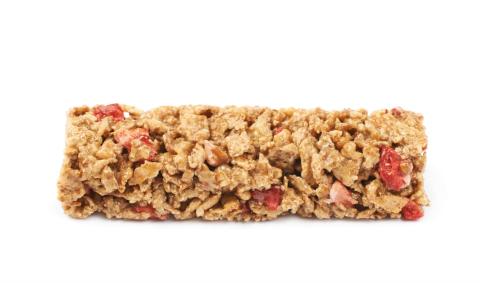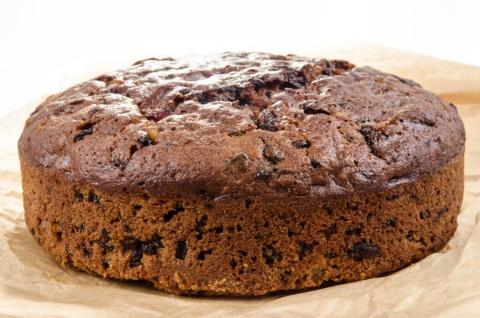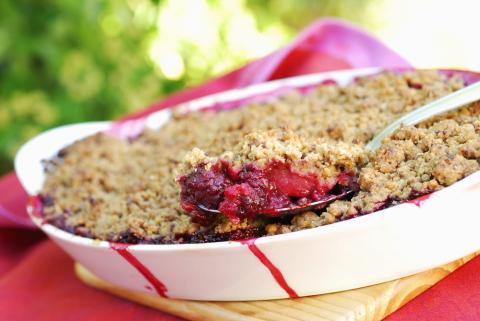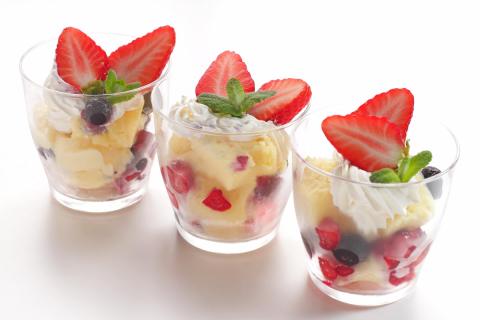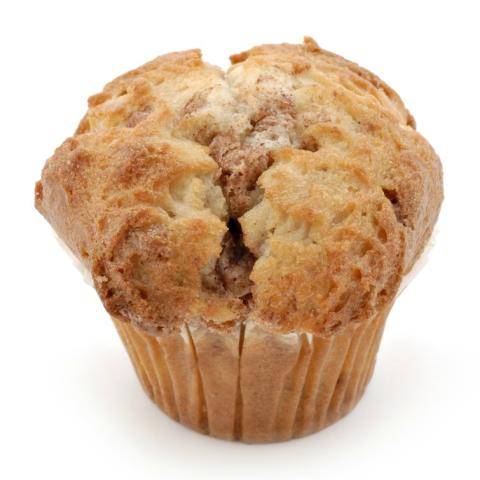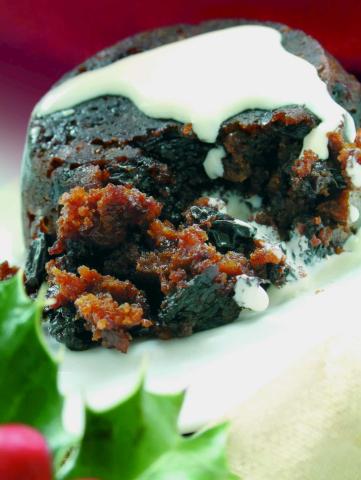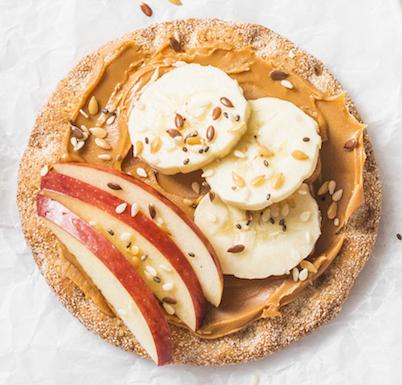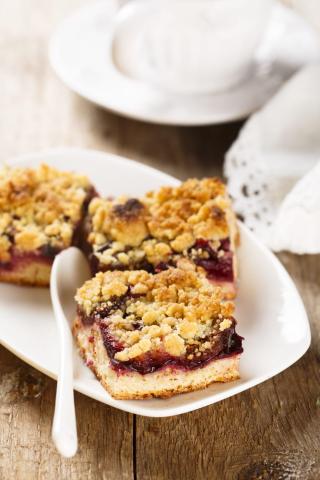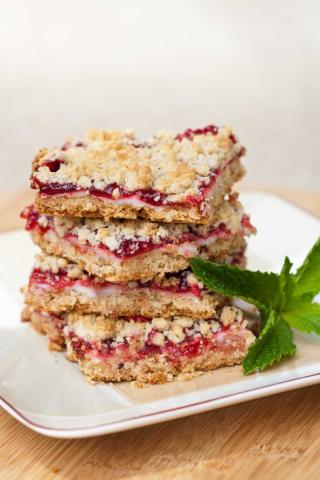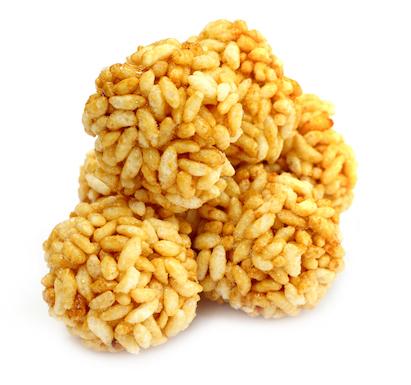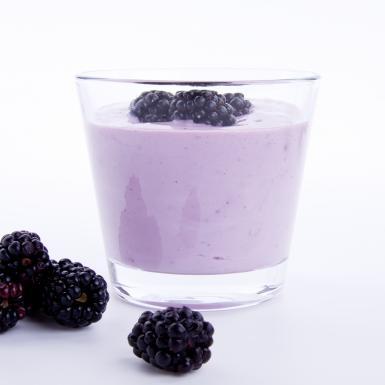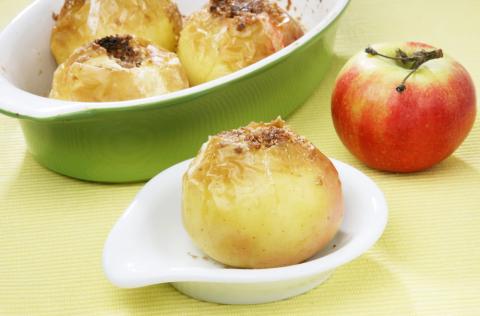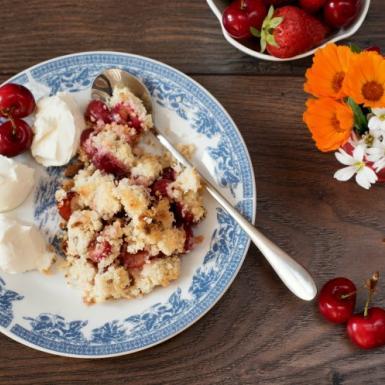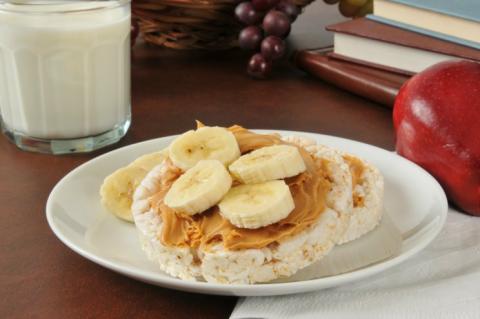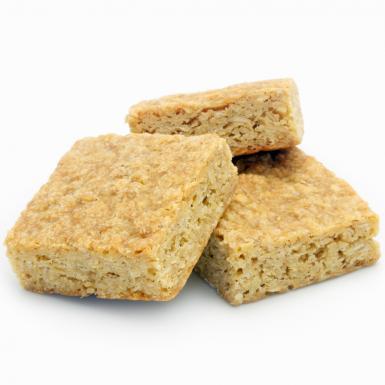- 1 Cups (140ml) Semi-Skimmed Milk
- 2 ½ Tablespoons (50g) Plain Flour
- 1 Egg
- 1 Tablespoons (15g) Low Fat Spread
- 80 (160g) Blueberries
Ingredients
Allergy Disclaimer
Always check the label of each ingredient for allergy warnings.
Method
- Pour flour into a bowl, add the egg and mix together well for 2 minutes.
- Gradually add milk until all the flour is mixed in.
- Continue to mix for another 2 minutes and then add any remaining milk.
- Melt half the low fat spread in a frying pan and add 3 tbsp of mixture to the pan.
- When golden brown, turn and cook the other side.
- Remove the crepe and add more mixture to the pan.
- After two crepes melt the remaining low fat spread to cook the remaining two crepes.
- Serve with blueberries.
Time Saver Tips
You could always use ready mix batter – quick and easy!
Cost Saver Tips
Enjoy with seasonal fruit: fresh,frozen or canned.
Tips for Kids
They will enjoy making the batter and tossing crepes. (Be sure to wash hands after handling raw egg and supervise if handling hot pans.)
Nutritional Information
Based on a single serving of 90g (% of an adult's reference intake)
Energy
102 kcals ( 5 %)
427 kJ ( 5 %)
Fat
1.1 g ( 6 %)
Saturates
14.1 g ( %)
Sugar
4.6 g ( 5 %)
Salt
0.2 g ( 3 %)
Detailed nutritional information
| Per 100g | Per 90g serving | |
|---|---|---|
| Energy Kcals | 113 | 102 |
| Energy Kj | 474 | 427 |
| Protein | 4.9 g | 4.4 g |
| Total Fat | g | g |
| Saturated Fat | 1.2 g | 1.1 g |
| Carbohydrates | 15.7 g | 14.1 g |
| Total Sugars | 5.1 g | 4.6 g |
| NSP Fibre | 1.2 g | 1.1 g |
| Sodium | 63 mg | 56.7 mg |
| Salt | 0.2 g | 0.2 g |
Find out about nutritional labelling
Nutrition labels on the front of packaging
- Most of the big supermarkets and many food manufacturers display nutritional information on the front of pre-packed food.
- Front of pack nutrition labels provide information on the number of grams of fat, saturated fat, sugars and salt and the amount of energy (in kJ and kcal) in a serving or portion of a recipe.
- The labels also include information about reference intakes (expressed as a percentage) which are guidelines about the approximate amount of particular nutrients and energy required for a healthy diet.
- The colour coding tells you at a glance if the food has high (red), medium (amber) or low (green) amounts of fat, saturated fat, sugars and salt.
- The more greens on the label, the healthier the choice
- Amber means neither high nor low, so you can eat foods with all or mostly ambers on the label most of the time.
- Reds on the label means the food is high in that nutrient and these are the foods we should cut down on. Try to eat these foods less often and in small amounts.
Food shopping tips
If you’re trying to decide which product to choose, check to see if there's a nutrition label on the front of the pack. This will help you to quickly assess how your choices stack up. You will often find a mixture of red, amber and green colour coding for the nutrients. So when you're choosing between similar products, try to go for more greens and ambers and fewer reds if you want to make a healthier choice.
 Activities & Play
Activities & Play Behaviour
Behaviour Childcare
Childcare Development & Growing Up
Development & Growing Up Family, Friends & Relationships
Family, Friends & Relationships Feeding Your Baby
Feeding Your Baby Food & Eating
Food & Eating Health & Safety
Health & Safety Mental Health & Wellbeing
Mental Health & Wellbeing Money & Work
Money & Work Online Behaviour & Safety
Online Behaviour & Safety Pregnancy & First Days
Pregnancy & First Days School & Education
School & Education Sleep
Sleep



